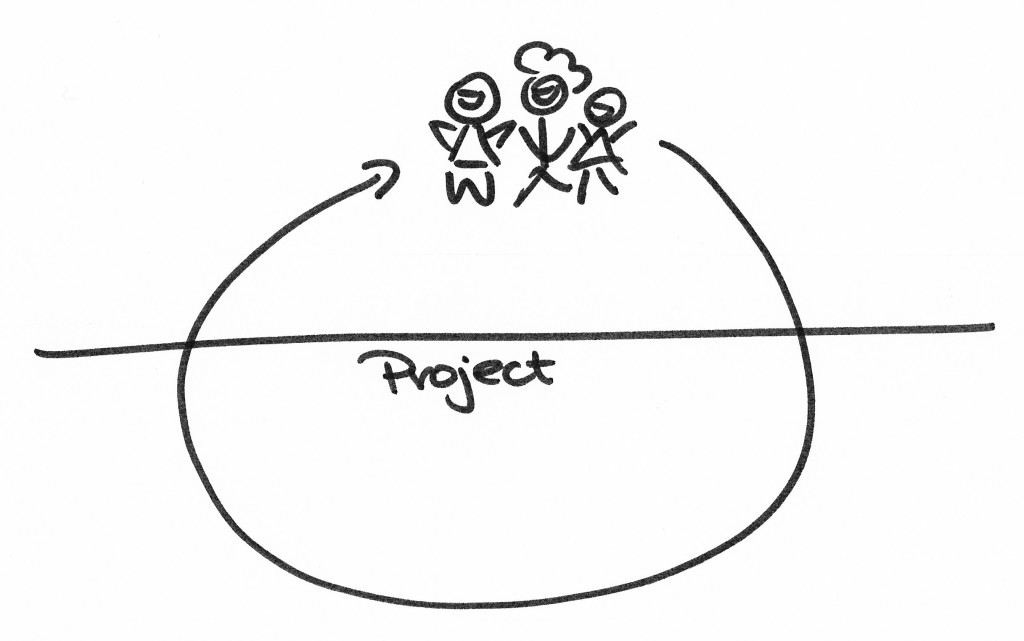“Once a photograph of the earth, taken from the outside is available, a new idea as powerful as any in history will be let loose.” – Sir Fred Hoyle in 1948.
What do you draw when you are visualizing a project on a whiteboard?
I draw an arrow from left to right that represents a timeline. Not always. But many times.
The way you visualize, determines your focus.
I’ve been playing with the simple but powerful concept of a Project Story Circle.

The project is represented by a circular arrow and is divided in half with a horizontal line.
The idea behind it is the following:
- An organization has the need for something. A challenge has to be conquered. A group of people starts a journey and brings back their result to the organization.
- The upper half of the circle represents time spent outside the project. Preparing for the voyage. And getting the results back to the place where it is needed.
- The bottom half makes up for project time.
- This will focus attention on the transitions organization-project and project-organization.
- This will focus attention on the idea that you undertake the project long before the actual project starts and that it only ends when you have gone full circle; when the actual benefits are realized.
You can use this shape when discussing projects.
- Where do people join the journey? (indicate on the circle)
- In which parts are they active? (indicate on the circle)
- Where do they expect problems? (indicate on the circle)
This basic shape is inspired by The Hero’s Journey, the universal structure of myths. What makes this narrative structure so interesting is not that many movies are based upon it. It’s more the reason why so many stories are following this flow. There is a certain appeal to it, we all recognize parts of how we experience our own life story.
One essential part of the Hero’s Journey is the transformation the hero is going through. In the storyline there is a defining moment when the hero is experiencing a major set back where he is hitting a brick wall. And this wall will be the turning point. During the bottom half of the circle you can also bring in the concept of the red convertible:
“I think a project can have a “red convertible” moment. It’s that breakdown, or more that revelation, in which you remember why you were doing something in the first place. … This transition is the “red convertible”.”
Talking about transitions is important. Transitions reveal patterns. And antipatterns. It’s the moment when contrast is at its peak. When everything remains the same, we don’t notice our rhythms and boundaries that much. When all of a sudden everything is changing, we start to notice what felt natural before.
I think the Project Story Circle can assist you in discussing those transitions.
